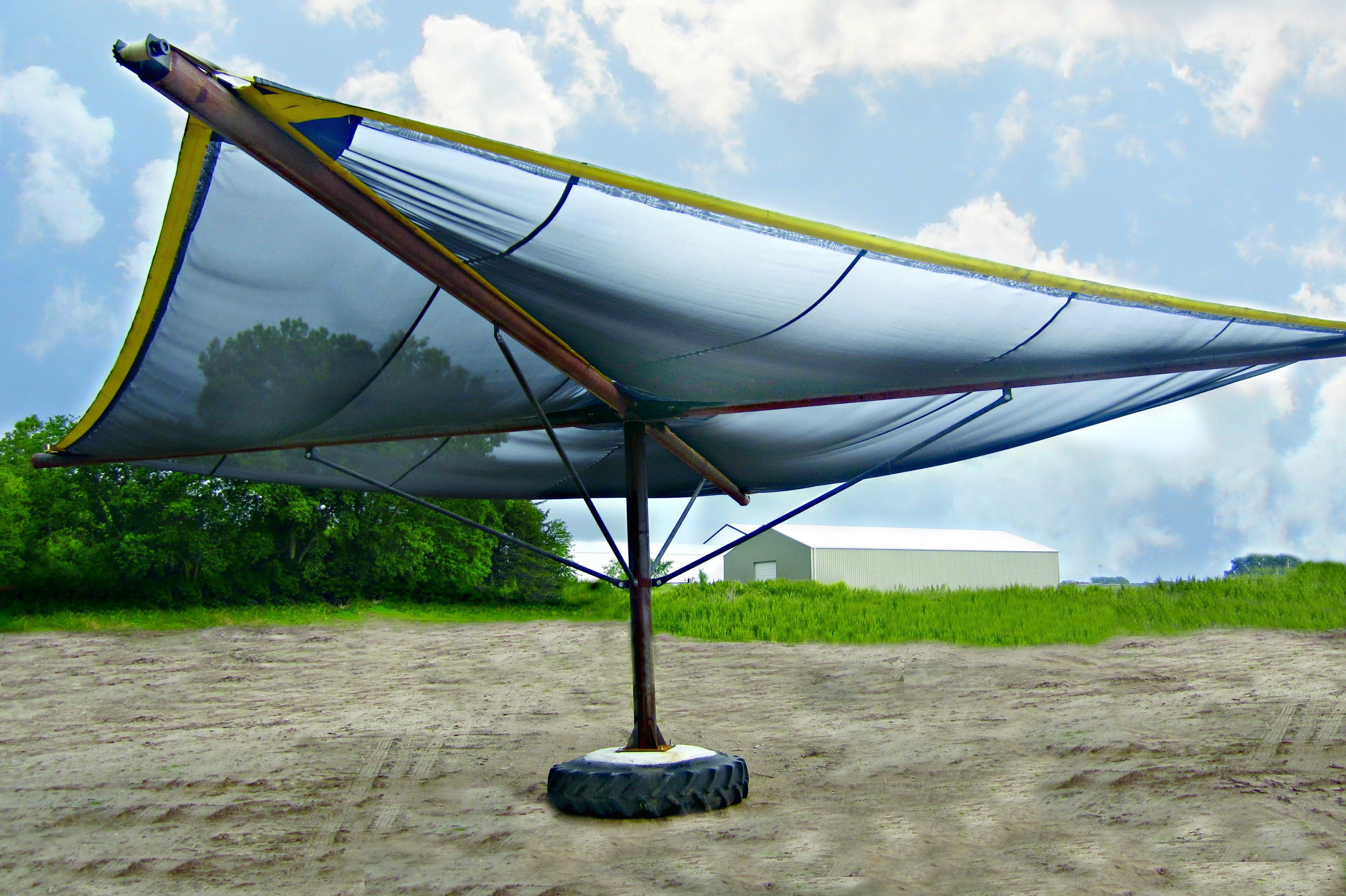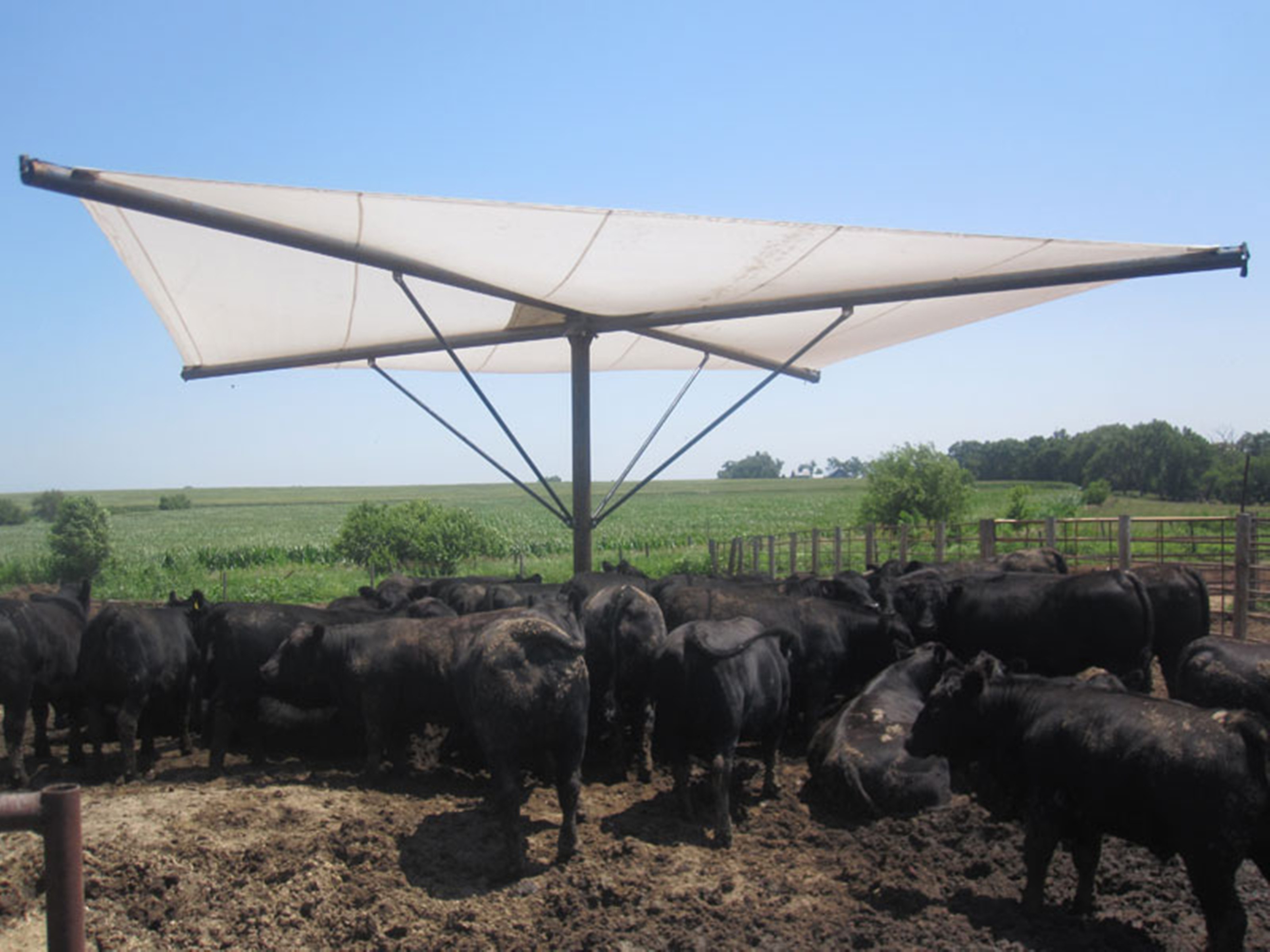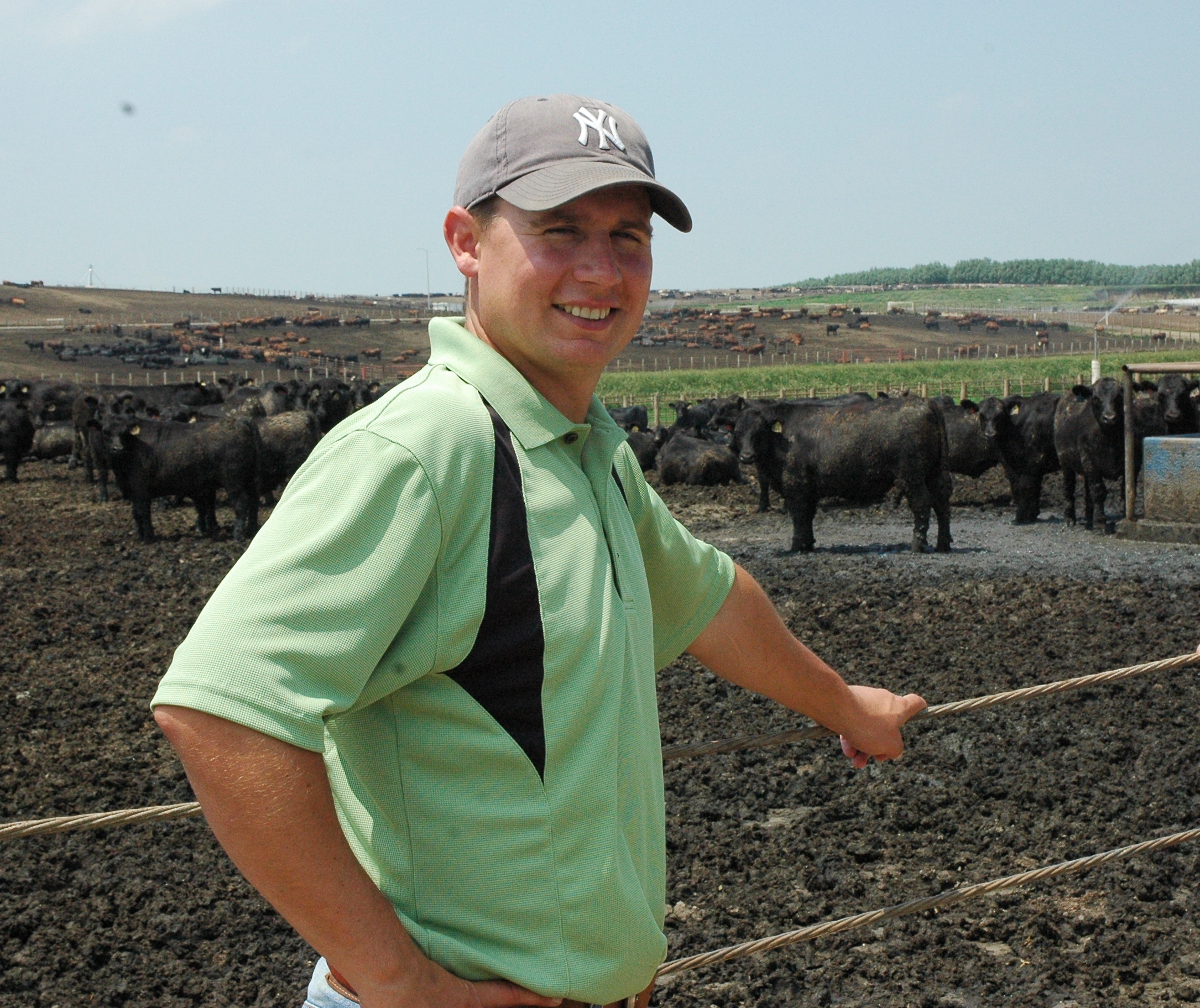



How to Manage Summer Heat Stress in Feedlot Cattle
Sprinklers and tarpaulin shades are two ways one Nebraska feedlot is managing the summer heat.Webord Feeding company, near Pender, are preparing for summer, unpacking 16 shades this spring.

The portable shades have been bought over the last two years, explains the Certified Angus Beef Brand, as another means of reducing heat stress.
“Shades have been a great addition, another tool for the toolbox,” says Tyler Weborg, who comanages the 25,000 head feedlot with his dad Kent. “I wouldn’t say they’re a cure all, but they’ve worked in combination with sprinklers.”
The family consulted with Terry Mader, retired Nebraska beef Extension specialist, to develop a plan for dealing with the problem days: hot, humid and still.
He says shade is just one of the many management and facility options producers have to help their animals through those times.
"You really shouldn’t go into the summer without a heat mitigation plan,” says Mr Mader, who recently summarized decades of research into, “Guidelines for Managing Heat Stress in Feedyard Cattle.”
The best management practices, developed for Certified Angus Beef LLC, can be found at
www.cabpartners.com/educators.
“All cattle, of all sizes, shapes and kinds can be under heat stress,” he says. “It’s a continuum where the blacks and dark reds will absorb the most solar radiation but the whites absorb some, too. And all of those things are confounded with body condition, hair coat and feed intake.”
Similarly, there is no single solution.

“There is a low probability that just one thing is going to be the sole solution, but it will take the edge off,” Mr Mader says.
“Shade is a good one. It certainly will eliminate the most severe part of the heat load, but you have to understand that there are more things you can do to keep the animals comfortable.
"You can pick and choose. You don’t have to do them all, but these are the things at your disposal.”
Suggestions include moving processing times to cooler times of day, wetting portions of the pen’s surface or using sprinklers, and altering feeding schedule or ration.
“If you do at least one thing, it’s better than nothing,” he says, “but if you can do two or three things, then you have a greater chance of minimizing that impact and maintaining the cattle on feed.”
For the Weborgs, portable options allow them to place relief in the pens at highest risk, like those with animals closest to marketing.
“The combination of the shade and sprinklers gets the cattle spread out and gives them a chance to move between the sprinkler, the bunk, the tank and back to the tank,” Mr Weborg says.
“In observing them, they rotate in and out.”
Although there is an initial investment, he says “shades pay for themselves pretty quickly” when figuring lost gain and other potential health problems associated with heat stress. Mader also notes decreased dark cutters and quality grade impacts with cooling strategies.
“We did see some hard numbers on our performance, where in years previous cattle maybe went off feed, but with the shade and sprinklers, it seemed like they stayed more consistent,”
Mr Weborg says. “They were more comfortable and they continued to eat throughout the day.” That appetite is a good sign.

Tyler Weborg - Night time and early morning can give cattle a chance to cool off, but this needs temperatures of below 70 degrees F.
“There is climatic and metabolic heat stress, and one of the main mechanisms the animal will have is that he’ll just stop eating so that he can drop that metabolic heat load,” Mr Mader says.
If cattle continue to eat, it’s a good indication that prevention measures are working and they’re able to dissipate heat, he says.
Mr Mader suggests producers monitor the weather conditions carefully, poised with a plan to respond.
“If you need to have extra water space, have the tanks available and a mechanism to fill them,” he offers as an example.
Seventy degrees. That’s a critical number for Weborg.
“If the temperature doesn’t get below 70 degrees overnight and through the early morning, cattle don’t have a chance to cool off,” he says. “You keep an eye on cattle movement. If cattle start milling around, looking for air, you better get a plan in place and keep ahead of them.” Humidity and air flow are other significant variables to watch.
It would be easier if there was a one-size-fits-all approach, Mr Mader says, “but when you’redealing with an external environment you have no control of, that’s a variable component you have to be aware of relative to the welfare of the animal.”
In the feeding belt, most of the “heat events” occur from July 1 to August 15. Although true heat emergencies are somewhat rare, Mr Weborg says it’s important for both themselves and their feeding customers to know they’re prepared.
“We try to do the best job we can,” he says.



